Multiple scenes play simultaneously as this alternate universe is viewed in great detail.
from It's Nice That https://ift.tt/333XEX6
Multiple scenes play simultaneously as this alternate universe is viewed in great detail.

In a campaign by Ogilvy Hong Kong, the two brands have released the Säva table, which is perfectly proportioned to hold a pizza box and even comes in its own giant pizza box packaging.

The New York-based photographer has captured her changing family dynamic over an extended period in her series Fault Lines.

Amin Taha's architecture studio Groupwork has collaborated with structural engineer Webb Yates to design a conceptual 30-storey stone office block that would be cheaper and more sustainable than concrete or steel equivalents.
Groupwork and Webb Yates designed the skyscraper to investigate how the cost and sustainability impact of a tall building with a stone structure compared to one with a concrete or steel structure.
The research found that large commercial buildings could be built more cheaply and with less of an environmental impact using stone rather than concrete or steel.
"It's research to investigate how tall you can go in stone," Taha told Dezeen. "[To] demonstrate to commercial clients – that are consistently building a lot and at a large scale – that it's cheaper and enables a 90 per cent reduction of embodied CO2."

The stone skyscraper research project forms part of an exhibition called New Stone Age at the Building Centre in London, which was curated by Steve Webb, co-founder of Webb Yates, Taha and Alex Cotterill from Groupwork and stonemason Pierre Bidaud. Both projects aim to show how the potential stone has as a modern building material.
"We've only just rediscovered what architects have known for 7,000 years," said Taha. "Stone is versatile, has strength, longevity, is plentiful, cheap and, with zero embodied carbon, well placed for a renaissance."
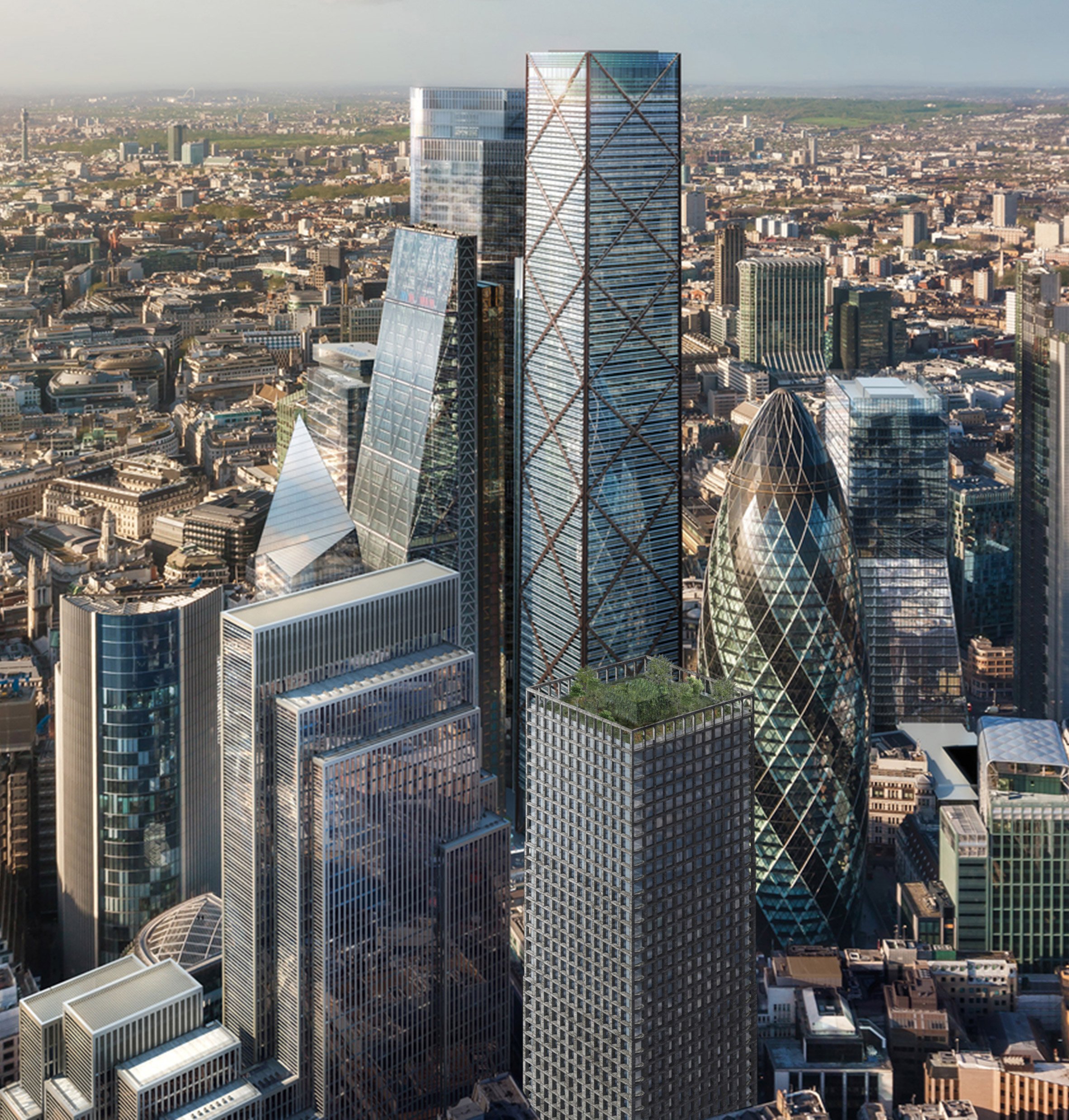
Groupwork and Webb Yates worked with sustainability consultants Eight Associates, cost consultants Jackson Coles, specialist stone designers The Stonemasonry Company and stone manufacturer Polycor to design the 30-storey commercial office tower.
The tower has a stone structure based on Groupwork's RIBA Award-winning 15 Clerkenwell Close project, but at a much larger scale.
"It is the same exoskeletal, trabeated [post and lintel] structure extrapolated from six to 30 storeys," explained Taha. "But it uses basalt instead of limestone."
"It has larger floor plates and spans, built in either cross-laminated timber or pretensioned stone and at 30 storeys various parts of the structure require fire integrity for 90-120 minutes instead of 60 minutes [required for shorter buildings]," he continued. "We tested limestone, granite and basalt at the British Research Establishment with the latter found to perform best."
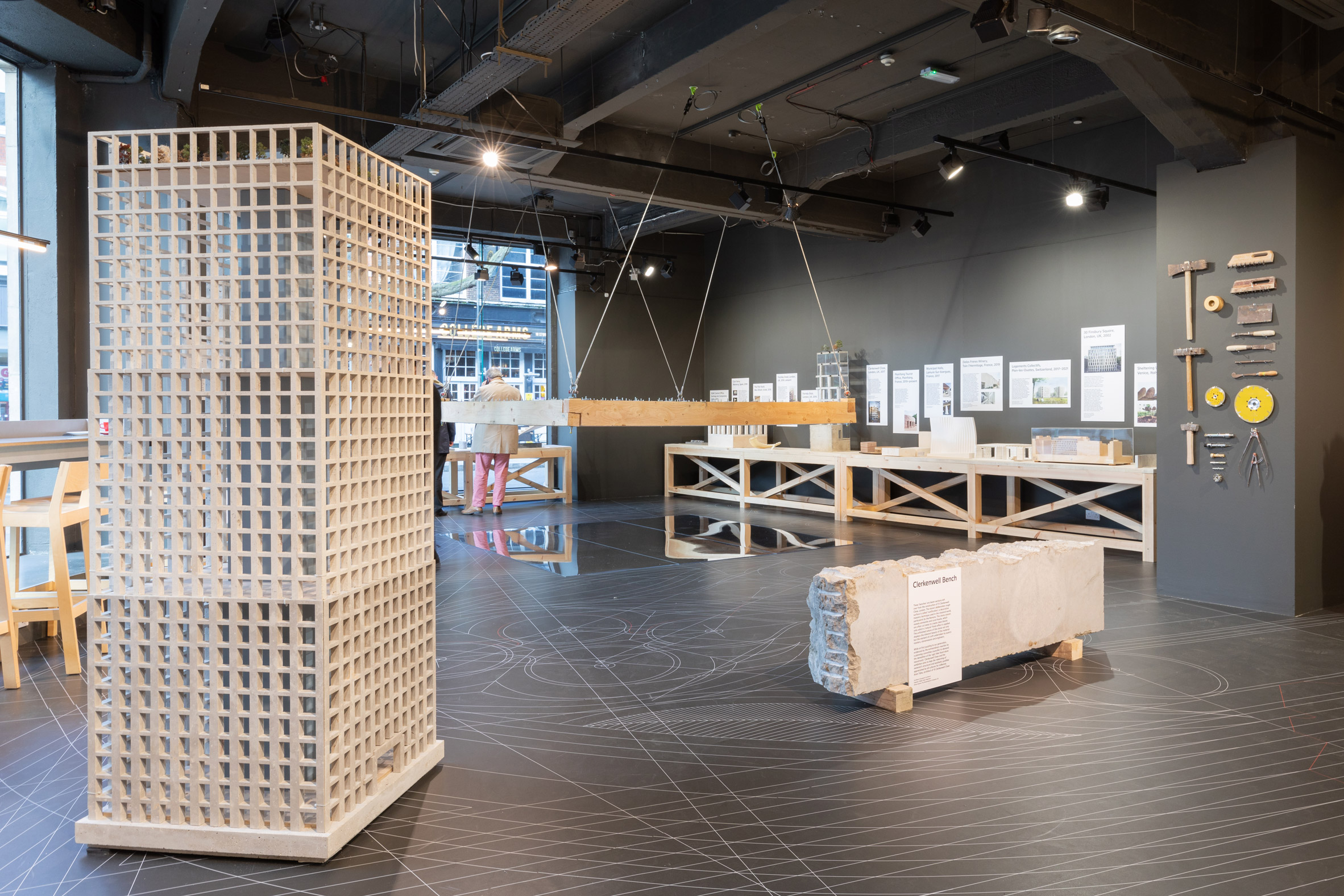
The research showed that a stone tower with stone floors would have considerably reduced levels of embodied carbon compared to steel or concrete structures.
"Inherently, stone has zero carbon footprint," stated the report. "It is the energy used in quarrying, preparing and lifting the stone into place where CO2 builds up."
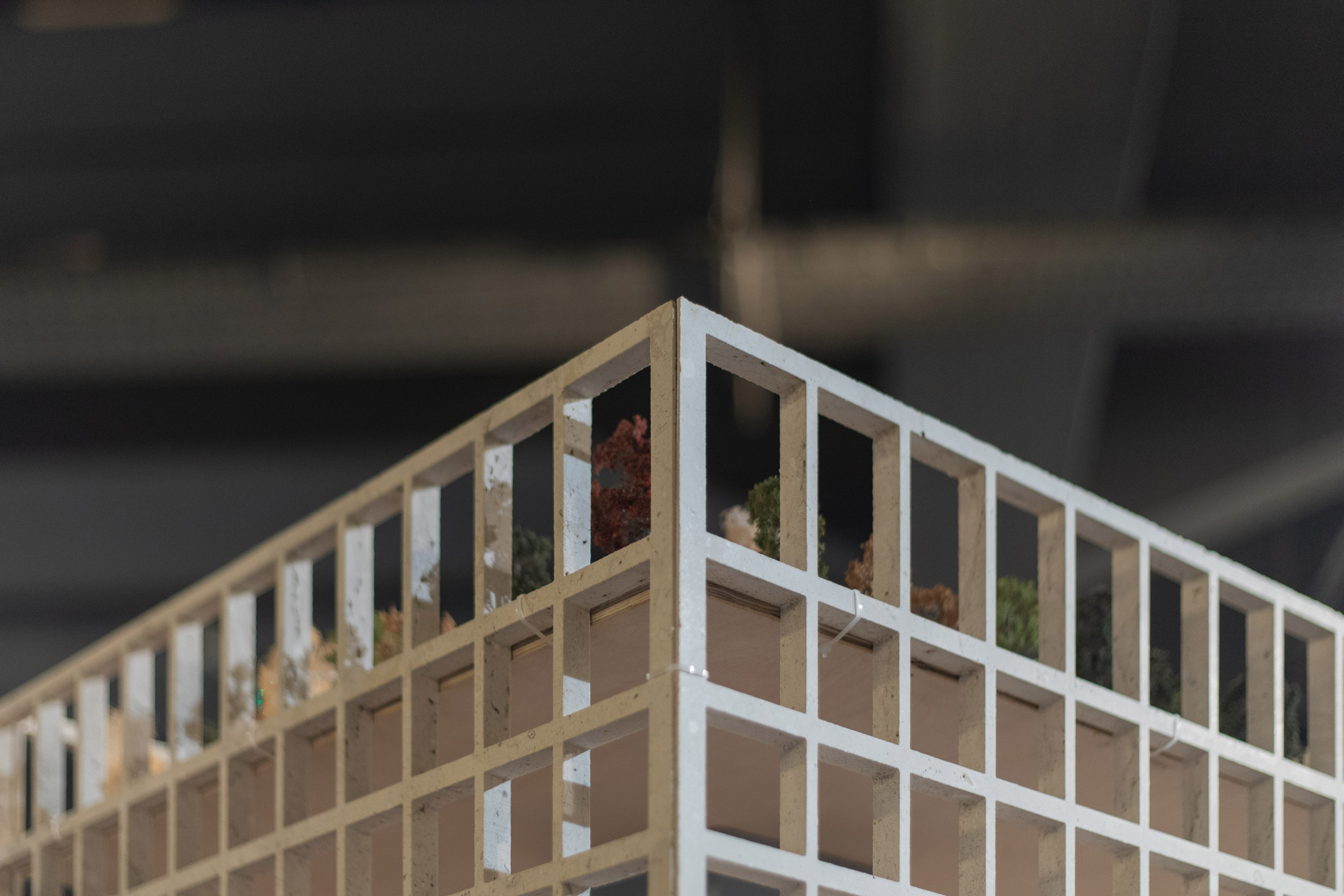
Sustainability consultants Eight Associates calculated that there could be up to a 95 per cent reduction in embodied CO2 if stone is quarried in the same country as a building. There would typically be approximately a 60 per cent reduction in embed carbon compared to a steel frame structure and around an 80 per cent reduction compared to concrete.
Combining a stone frame with cross-laminated timber (CLT) floors would further reduce levels of embodied carbon and could create carbon negative buildings as timber captures and stores CO2.
"A combination of stone exoskeleton with CLT floor slabs is cheaper than the equivalent building using steel or concrete frames and with a negative carbon footprint," explained Taha.
"Put another way, we could demolish and replace concrete and steel framed buildings with stone and timber and still be carbon negative."
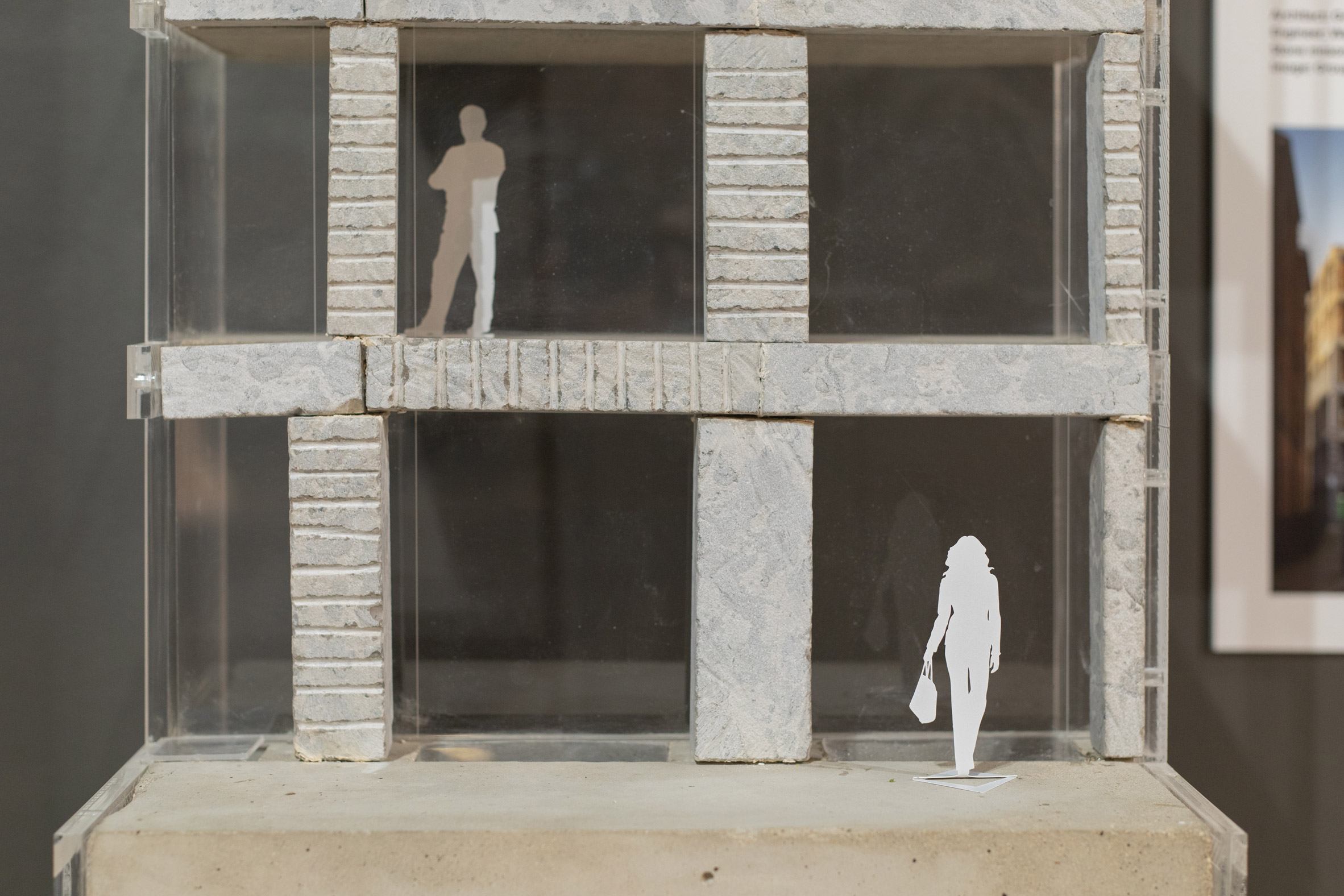
According to cost consultants Jackson Coles the towers could also be built cheaper than steel or concrete equivalents.
The cost of a stone structure would be marginally higher than steel or concrete. However, as stone would not need to be fireproofed, weatherproofed or clad with stone veneers, the overall cost would be lower.
London-based Groupwork, which was previously called Amin Taha Architects, used raw quarried limestone to create the structure of a housing block in Clerkenwell, which was shortlisted in the housing project category of Dezeen Awards 2018. The studio has also designed a 10-storey block of flats in Finchley, London, which has a load-bearing stone structure.
Photography is by Chris Jackson.
The post Groupwork designs 30-storey stone skyscraper appeared first on Dezeen.
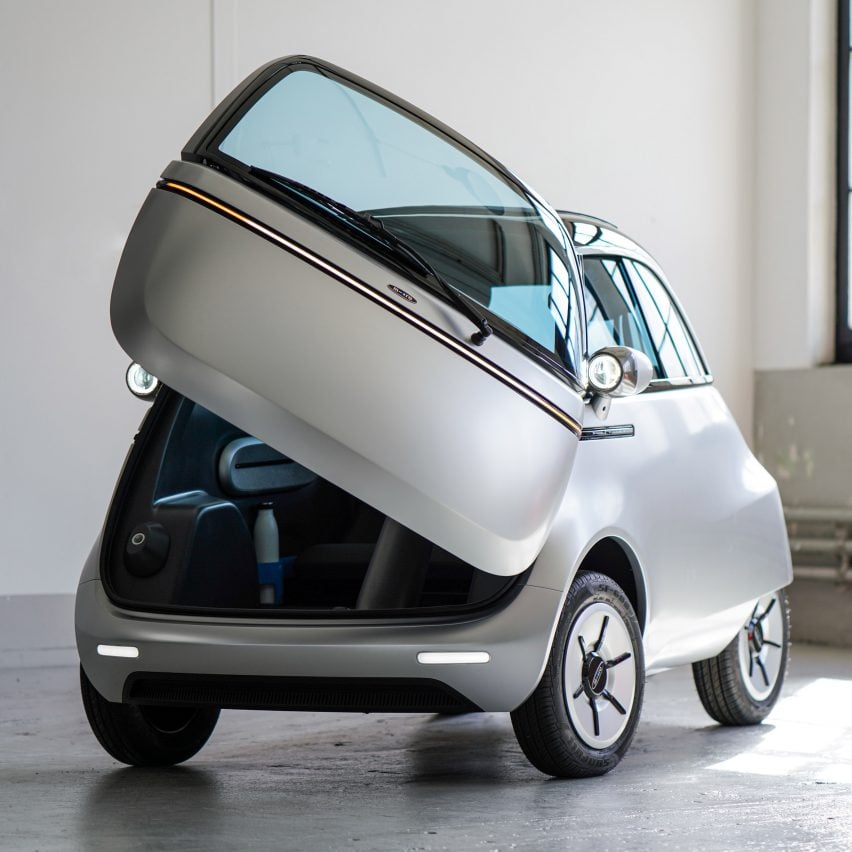
Swiss company Micro has released a retro-style electric car, motorcycle and scooter as part of its vision for near-future micro-transport in cities.
The automaker unveiled four different models – an updated version of its Microlino microcar from 2016, a new e-motorcycle and two new e-scooters, all designed for use in urban environments.
The microcars were set to be debuted at this year's Geneva Motor Show but, as the event was cancelled, they were instead presented at a virtual press conference in Zurich via a live-stream on the 4 March 2020.

Measuring at just 2.4 metres-long (7.87 feet), the Microlino 2.0 is small enough that it only takes up a third of a standard parking space. It was designed to combine a modern look and mechanics with "retro charm", resembling the Italian-designed Isetta microcar from the 1950s.
It is able to reach a top speed of 56 miles per hour, or 90 kilometres per hour, with a range of 124 miles (200 kilometres), and is set to be rolled out in 2021.
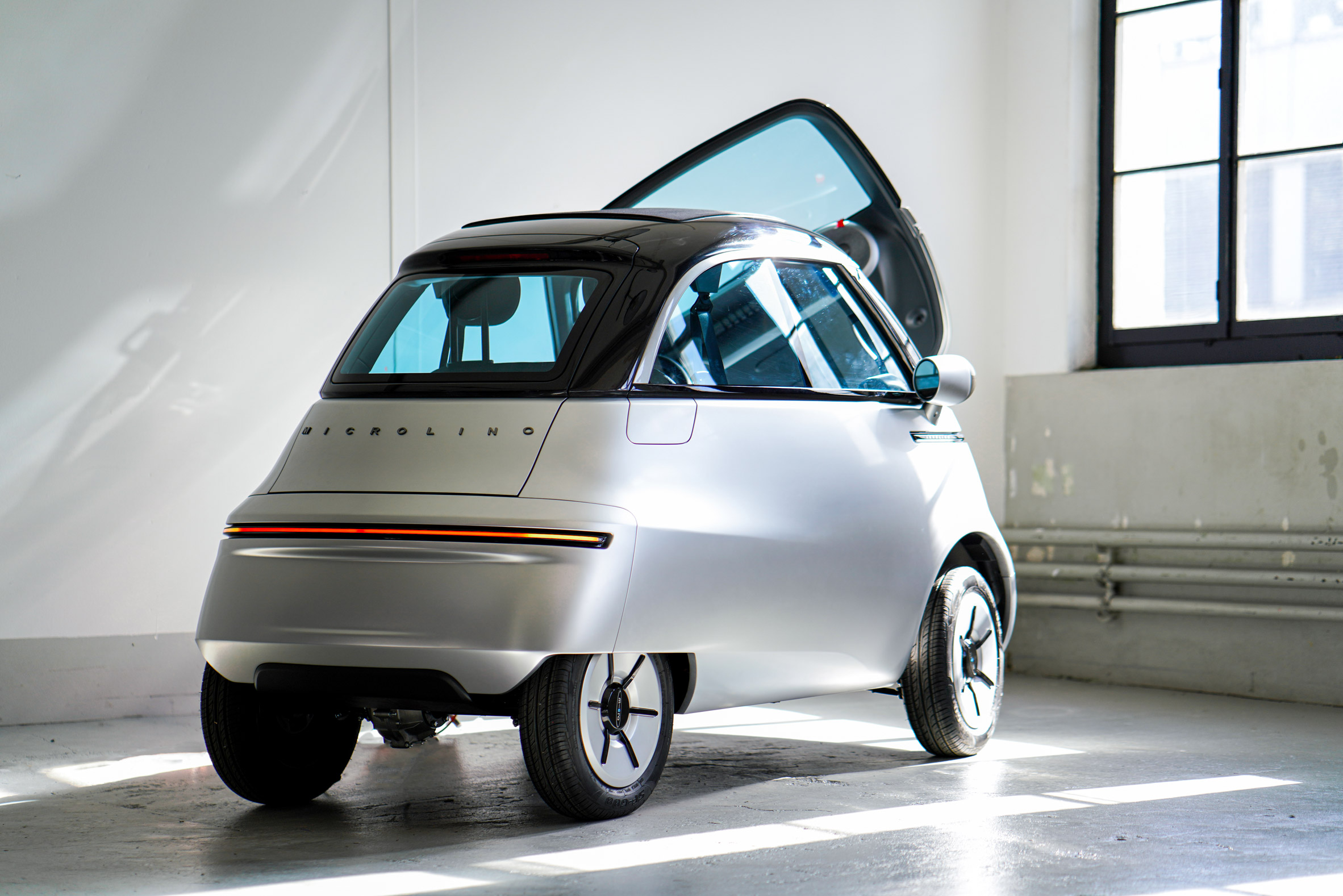
Micro has updated its original design to address concerns with quality and safety, which were submitted by consumers via an online survey.
"It has always been important for us to be able to integrate the Microlino community as much as possible into the development process," said co-founder Oliver Ouboter. "With the Microlino 2.0 we want to do this much more consistently than ever before."
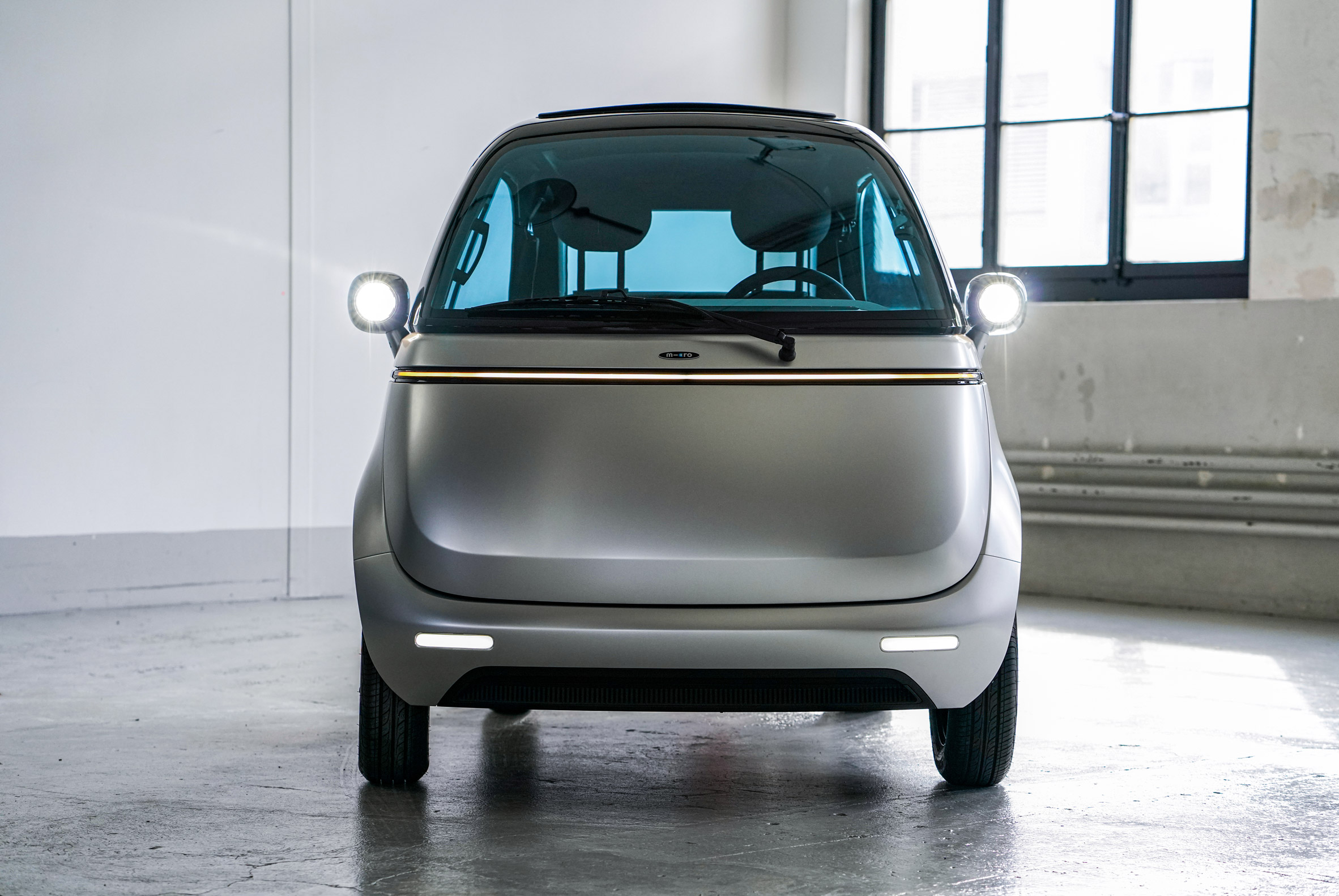
These updates to the Microlino 2.0 include a chassis comprised of pressed steel parts, and a body made from aluminium and steel instead of plastic.
The car now has independent suspension in both the front and the rear, which required increasing the rear track by around 50 per cent, and by mounting the electric motor on the chassis instead of the rear axle.
The motor is now synchronous with permanent magnets, granting it around 15 per cent more efficiency than the previous asynchronous motor. This means the Microlino 2.0 can have a longer range or smaller battery.
Micro has also switched to new lithium-manganese-cobalt-oxide batteries – the same battery that is used in some Tesla models, which have a higher energy density than average.
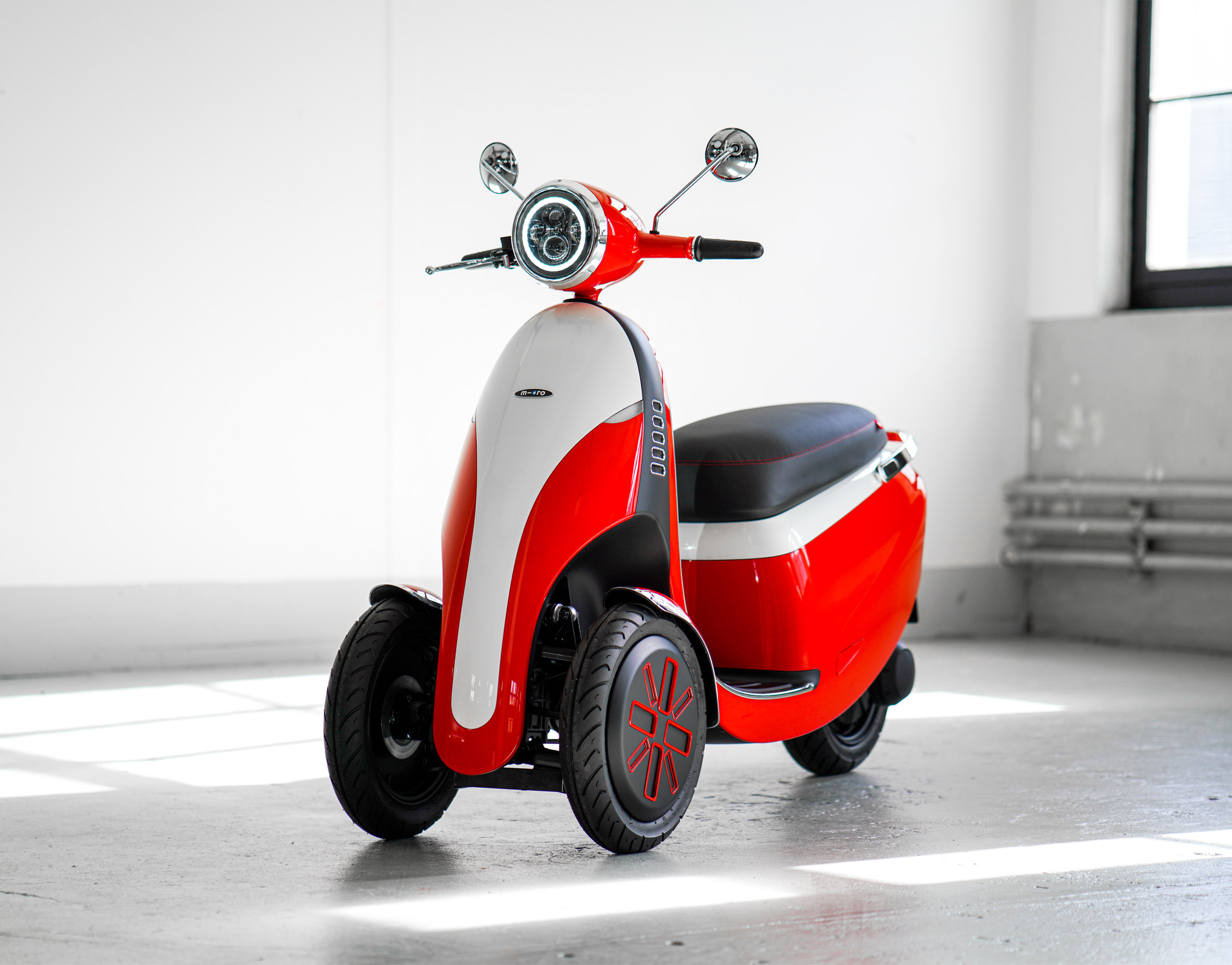
The Swiss automaker also debuted a three-wheeled electric motorcycle, the Microletta, which can be driven at a speed of up to 50 miles per hour (80 kilometres per hour).
Underneath the bench seat, which is made from "eco-leather" and is able to fit two people, are two swappable batteries that have a range of 62 miles (100 kilometres) and can be charged at the owner's home within four hours.
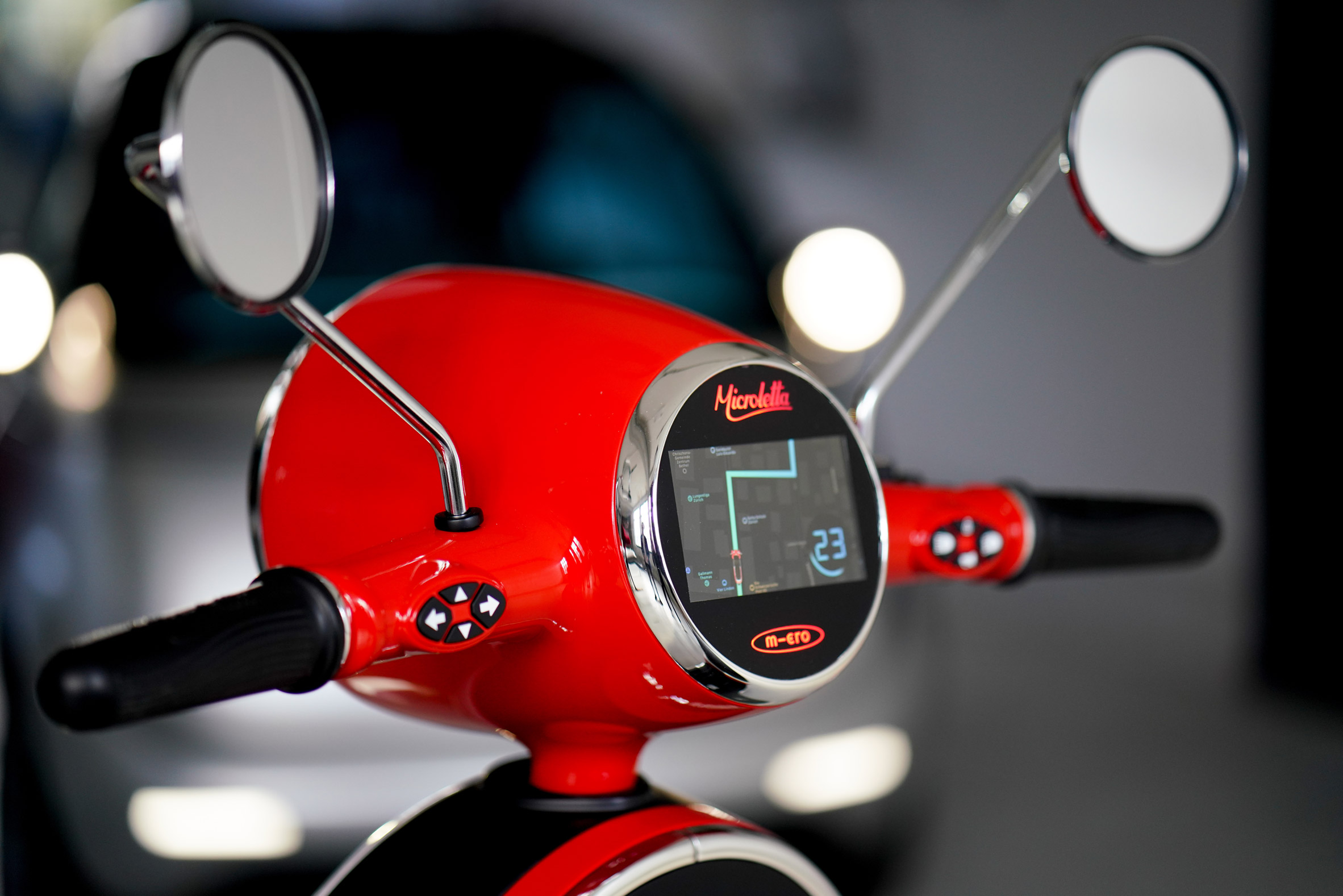
Beside the batteries is a space for the user to keep their helmet or other belongings, while at the back is a rear LED braking light with integrated blinkers. On the side of the vehicle is a platform with a foot brake, however a hand-brake lever is also built onto the handlebar.
The Microletta also has a digital screen that displays information about the motorcycle including speed, navigation, battery status, range and acceleration. Users can also connect their phone to this screen to check their messages when stopping at a red light, for instance.
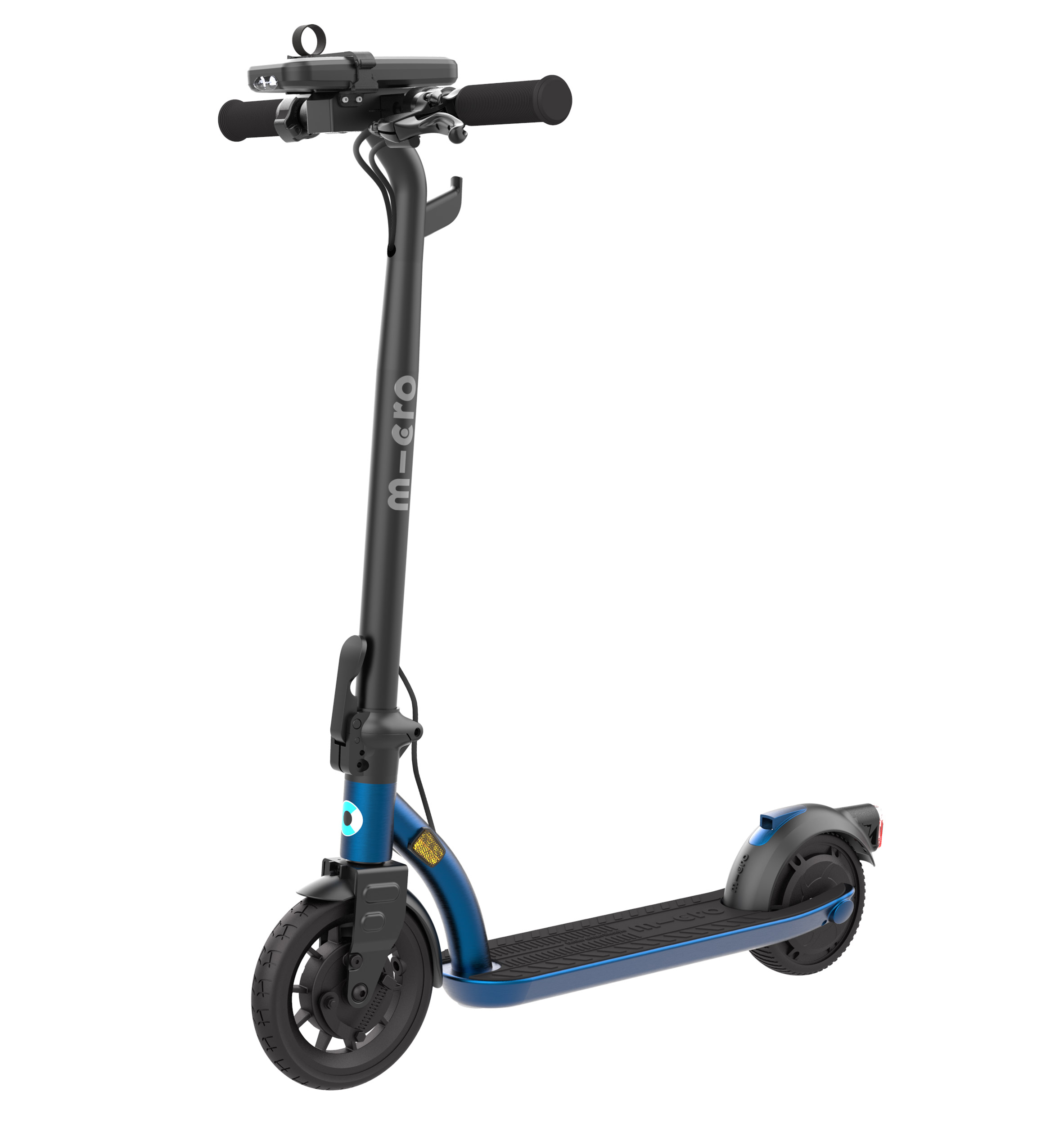
Micro also unveiled two new electric scooters – the Micro Commuter and the Micro Explorer. The former is designed to be used in combination with other modes of transport, such as the metro or underground. It is half the size of a normal e-scooter and weighs 30 per cent less, making it easy to carry around.
The Micro Commuter has a swappable power-bank that can be used to charge your smartphone on-the-go and then recharged at home. This grants it a maximum speed of 12 mph (20 kph) and a range of six miles (10 kilometres) on one charge, however if more is needed then the user can pack a second or third battery to extend the range.
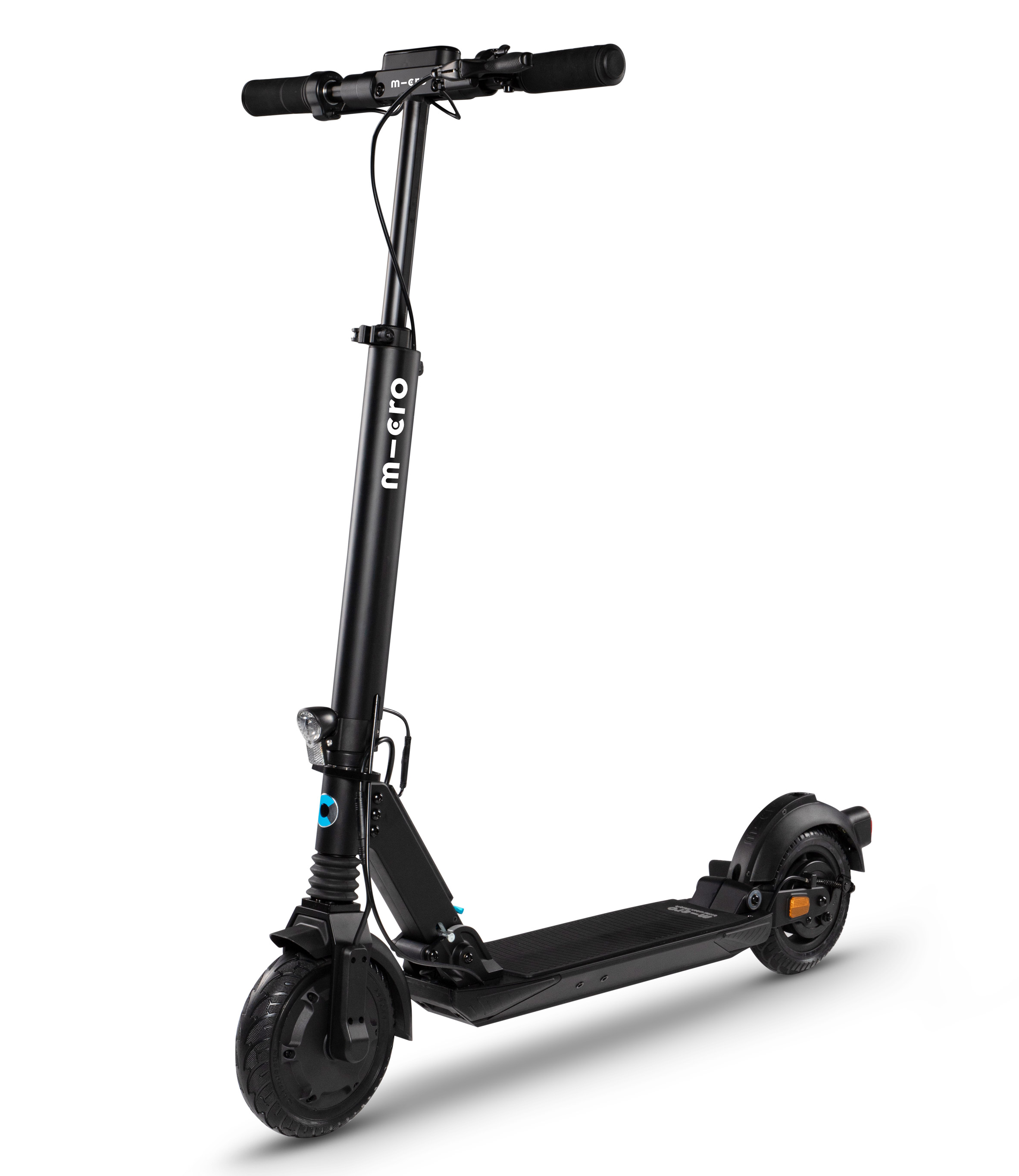
The second Micro Explorer scooter is designed to last for longer distances, and has a motor with up to 500 watts of peak power that can go from zero to 15.5 mph (25 kph) in under three seconds.
"This is not a gadget, this is a real vehicle," said the company. The scooter has suspension on both wheels and an "intuitive" twist throttle that, when turned forward, activated the electric regeneration brake and recharges the battery. The Micro Explorer also features an integrated display that shows speed and other information.
Other vehicles that were set to debut at this year's Geneva Motor Show include Renault's all-electric Morphoz concept car, which is designed to physically extend its size to go from a city car to a long-distance vehicle.
Hyundai also revealed its Prophecy concept car, which boasts a smooth and sleek design that the automaker likens to a "perfectly weathered stone".
The post Micro unveils electric bubble car and three-wheeled e-scooter appeared first on Dezeen.